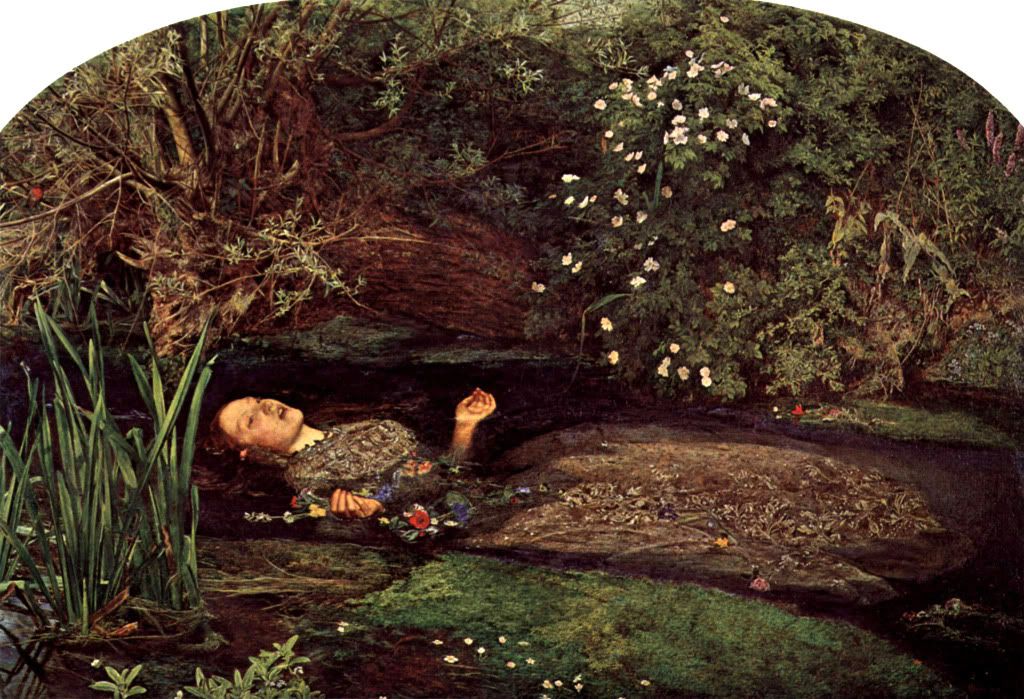Chapter Six: Poets and Princesses
An economy of images this time, but the included images are very important to the story. I will warn now, I can never please myself so the wording is likely to change slightly when the final, final edits are posted.

I could visualize Ophelia effortlessly: she was being borne to her grave by the gentle flow of a sun-flecked river. Brightly colored blossoms were clutched loosely in one of her beautifully formed hands, and the fingers of the other broke through the water’s surface, feebly trying to stop themselves being submerged. Her lovely ashen face was surrounded by a halo of wispy chestnut curls which bounced delicately on the surface of the water. Her face was frozen in an expression of absolute despair. Her pale, blue lips were parted slightly but I could tell her mouth had produced a gasp, not a word. Cold, bitter grief had smothered her voice. The scene was astonishingly vivid, as if I had recently witnessed Ophelia’s lonely, quiet death from the bank of the river and passed an account of it onto Shakespeare.

I looked at her -- and froze. It was me. The angel was me. Her gown, her elaborately arranged hair and her startlingly white skin made me recognize her from my dream. She seemed flawless at first: one of her fine hands was pressed against her heart, and her skin was as white as fresh milk which I couldn’t help think made her look slightly wrong, wrong in the way a beautiful, marble effigy is wrong. Although I couldn’t think why, she wasn’t fully convincing. I examined her more closely. Her hair was a bed of delicate, silver threaded curls. Her profile was hard to make out; my eyes were denied her face. My gaze traveled down instead and I stared at her neck; it was dominated by a diamond necklace that flickered in the final glow of the sun. It climbed and fell with her weak, strained breaths,. She was trembling; her closely-bound chest shuddered from the effort it took to survive. I frowned; she wasn’t supposed to struggle, there wasn’t meant to be any pain. Shunning my concerns, I moved on, taking in the sight of the dazzling white gown that contained her small, feeble looking body. It was the same dress I had worn in my dream. The beautiful, snow-white dream that had seen him take me in his arms and dance with me.
.
.
.
.
.
The effigy in the second image is of a real person,Victoire Auguste Antoinette of Saxe Coburg-Gotha, who died in 1857 at the age of 35, a minor German royal. She died due to complications from childbirth. Hers was the most appropriate effigy I could find to illustrate what I am trying to get across.
Elizabeth Siddal, the model for Ophelia in the first (and very famous) painting by John Everett Millais, died at the age of 32 under tragic and heavily debated circumstances that are too complex and convuluted to write out.